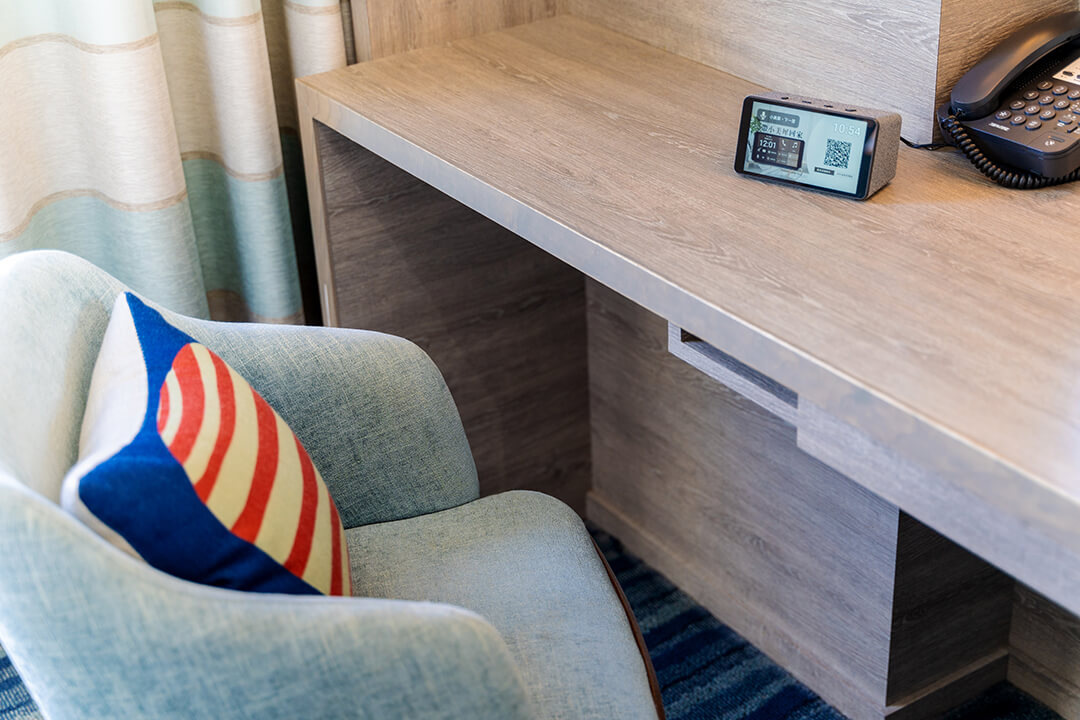Voice Assistants (VAs) and chatbots have now earned a spot in the tech tool stack of many hotels but choosing the right solution for your hotel is not easy. If you wish you could implement something like ChatGPT in your hotel but have no idea where to start, this article is for you.
First, the choice is not between voice assistants and chatbots. Voice and chat refer to the different ways guests interact with the technology, also called conversational user interface (conversational UI). When you’re evaluating which solution will best suit your hotel, you should base your decision on the technology behind it. The interface, which is voice or chat, comes second.
There are 2 main types of conversational agents used in most solutions on the market:
- Rule-based bots – rely on keyword matching and pre-defined structures
- Conversational AI – based on machine learning language models; a good example of conversational AI is ChatGPT
Each is there to meet different goals for hoteliers and each fits a different application in the industry. After reading this article you’ll understand:
- Technical differences: Comparison of Rule-Based bots and Conversational AI
- Benefits for hoteliers: What problems does each type of technology solve for hoteliers and what are their limits
- Guest Experience: How do hotel guests experience each type of technology
In this article:
RuIe-based bots
Let’s talk basics!
Rule-based bots work with questions, structures, answers, and keywords that are predefined by the hotel staff. Because they’re implemented on specific sets of rules, their scope depends on the bot designer.
Rule-based dialog agents are usually Q&A-based flowcharts, therefore they are not an AI technology, but rather a digital self-service system. It's the same technology that powers automated telephone responses – IVR.
User Experience: Solutions with rule-based dialog agents are also called rule-based chatbots, decision tree bots, or scripted bots.
The interaction with a rule-based conversational technology can be a simple Q&A flow, or a menu-based interaction (decision tree), where guests choose from a list of options.
Rule-based bots follow predefined rules, they don't have the ability to learn from new inputs or understand variations in a language beyond their pre-programmed rules.
Cons: Rule-based bots are implemented on specific keywords, can’t answer questions outside predefined rules, or understand typos, which can be frustrating for the users and limit their freedom of expression. Unlike conversational AI, rule-based dialog agents can’t leverage the data from interactions.
Hoteliers must continuously update the keyword rules to make these bots useful. This is often the reason why most hotels usually stop using them after a few months.
Price: Rule-based dialog agents are simpler, with no training engine they need less building effort than Conversational AI, therefore they are usually more affordable.
Rule-based solutions are for you
If you don’t have many queries from the guests, you want to implement a digital FAQ instead of printed information in the guest room, but you don’t expect much in return.
For your hotel, this means that the staff designs the questions and responses first. Guests go through a pre-designed Q&A tree that answers simple queries like check-out time, opening hours, or Wi-Fi password.
By pre-defining the structures and answers, you can control the entire conversation, but you miss an opportunity to learn about what your guests really want to ask.

Conversational AI
Conversational AI isn’t based on keywords. It tries to understand the intent of the user and their emotion in the context. This is possible thanks to the complex technology behind Conversational AI, which includes machine learning algorithms and NLU (Natural Language Understanding).
The accuracy level depends on the volumes and type of training data, such as conversation samples, texts, or articles. Thanks to this training the guests can ask questions freely and in different ways, such as ‘Set alarm for 7’, ‘Wake me up at 7’, ‘Schedule a morning call for 7’ and Conversational AI is able to generate a response or act accordingly.
Most likely, you have heard of ChatGPT or even tried it out yourself. ChatGPT is the world’s most powerful application of large language models (LLM) to this date. This tool is powered by GPT-3 and GPT-4 models, which allow for the most human-like conversations. ChatGPT marks a breakthrough in how the general public uses AI and it has already been introduced in a number of solutions including Aiello Voice Assistant (AVA).
User experience: Conversational AI understands unscripted queries coming from the guests, even with grammar mistakes or spoken with different accents (this is handled by ASR, or automatic speech recognition layer). Conversational AI can also learn to understand multiple intents in a sequence. This is why interactions with Conversational AI feel more natural and human-like compared to the rule-based dialog agents.
Voice assistants – Conversational AI meets voice interface
For humans, voice is one of the easiest and the most natural ways to interact with technology. Adding voice interface to Conversational AI levels up interactions with technology and makes the conversations feel more human-like. That’s why Voice Assistants have much higher usage than the rule-based dialog agents.
On average Voice Assistants answer every in-room query in 3 seconds with over 90% success rate while the same task usually takes more than 3 mins for rule-based chatbot solutions. (Guests scan the QR code > download the App or open the browser > chat their way to answer the question)
Cons: Conversational AI requires a dedicated dataset for training and implementation, and therefore a longer time to develop.
Price: Because of its advanced technology and training, the price of solutions powered by Conversational AI is typically higher but also leads to a much better task-completion rate, higher usage and better guest experience.

Conversational AI is for you:
- If you’re short-staffed, but have a large number of queries from the quests.
- If you’re looking for ways to collect more feedback on your hotel and take your customer experience to new heights.
- If you’re a hotel, that is looking to implement data-driven business decisions from the ground up.
- If you’re planning to invest in AI that is also beginner-friendly, an AI assistant that can tailor responses to your needs might be what you’re looking for.
- If you care about the future of your business and want to stay ahead of your competitors.
For your hotel, this means that guests can ask questions freely, and you get more insights into their real needs. Conversational AI continuously keeps improving without much further assistance. The more it interacts with guests, the better it will become at understanding the intent, and at answering guest requests.
Conclusion:
In this article, you’ve learned the difference between Conversational AI and rule-based bots. With this information, you should be able to make a well-informed choice of solution that best matches your business goals.
Rule-based bots and Conversational AI each serve a different purpose in the industry. If you are tired of printouts and want to give your guests a digital form of hotel FAQ, rule-based bots might be for you. But if your staff has a large volume of conversations with the guests every day, and if you’re looking to turn this data into business knowledge, opt for Conversational AI.
As exciting as the new technology is, it’s necessary to truly understand it before you pull the trigger. AI system is a long-term investment, it comes with benefits that go beyond the shiny guest experience. It helps your staff free up more time, work more efficiently as a team, and centralize requests and interactions in one place, minus the fuss.
If you want to dive deeper into Conversational AI solutions for hotels get in touch with our team and we'll get back to you within 2 working days.
Book a free demo with us
Do you want to learn more about what we’re building? Contact us to schedule a demo.








